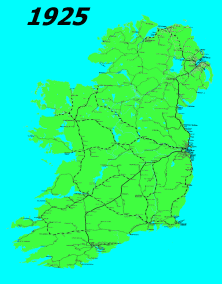Events
February events
- February 22 – Passenger service began on Strasburg Rail Road with a visit from Abraham Lincoln.
April events
- April 1 – Budapest Déli station opens as the Buda terminal of the line to Fiume.
- April – Nathaniel Marsh succeeds Samuel Marsh as president of the Erie Railroad. [1]
May events
- May 13 – Line opened between Karachi and Kochi (169 km (105 mi)) on 5 ft 6in (1676 mm) gauge, the first railway in modern-day Pakistan. [2] [ page needed ]

- May 24 – The Great Train Raid of 1861 is conducted by Stonewall Jackson.
June events
- June 16 – Battle of Vienna, Virginia, is the first time in history a railroad is used tactically in battle.
- June – Opening of first section of rail line in Paraguay, under the auspices of Presidente Carlos Antonio López, with mainly British engineering, 4 km (2.5 mi) from Asunción to Trinidad on the Iberian gauge of 1,672 mm (5 ft 5+13⁄16 in). [3] Regular services to Paraguarí begin on September 21 and on December 25 the line is extended to the city of Luque. [4]
July events
- July 21 – Railroad transport of Confederate States of America troops delivers decisive reinforcements providing victory in the First Battle of Bull Run. [5]
August events
- August 6 – An Act is passed to authorize the construction of the Blane Valley Railway in Scotland.
September events
- September 4 – The Staten Island Railway is placed into receivership with William Henry Vanderbilt as receiver. [6] [7] [8]
December events
- December 25 – Opening of first rail line in Latvia, between Riga and Dinaburg (Daugavpils), 230 km (140 mi) on the Imperial Russian gauge of 1,524 mm (5 ft). [9]
Unknown date events
This section needs to be updated.(October 2020) |
- Jean-Jacques Meyer patents the Meyer locomotive.
- Jackson and Woodin Manufacturing Company in Berwick, Pennsylvania, later to become part of American Car and Foundry, begins manufacturing railroad infrastructure parts.



